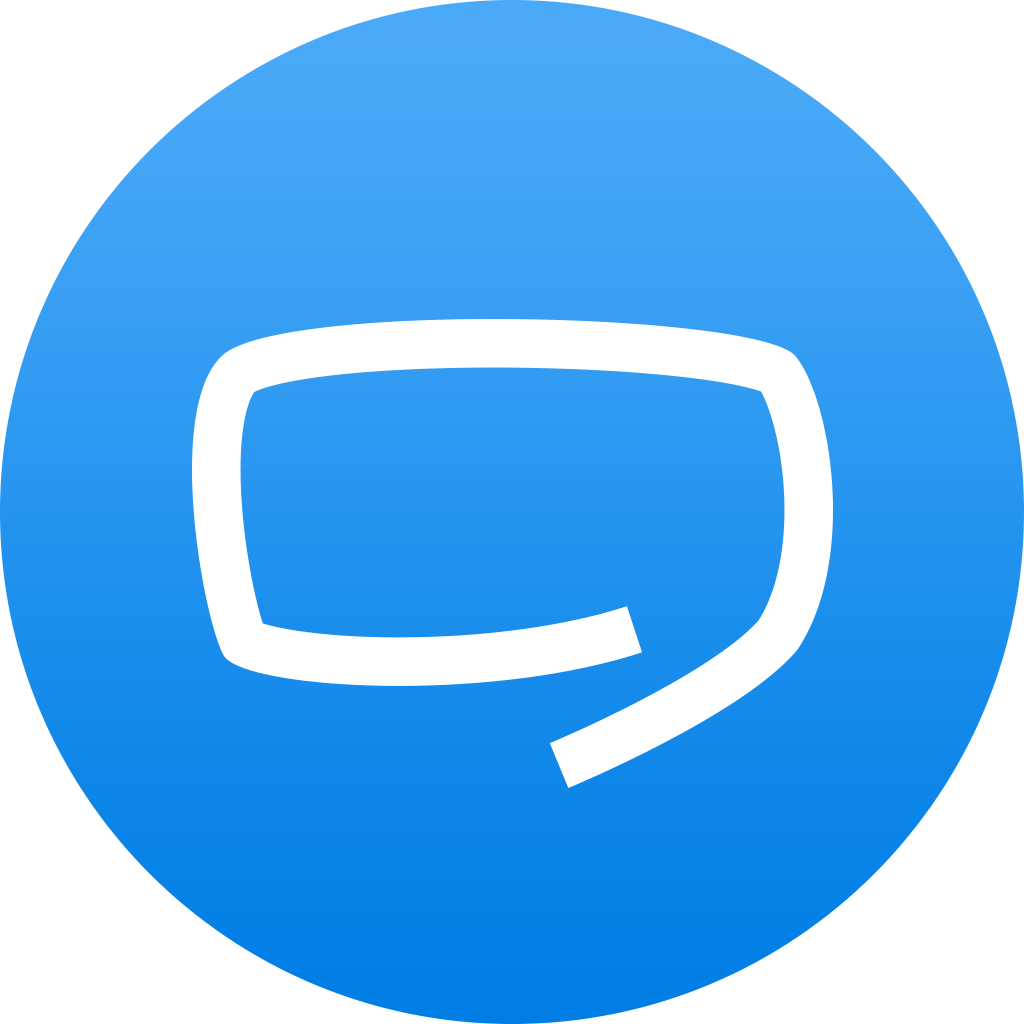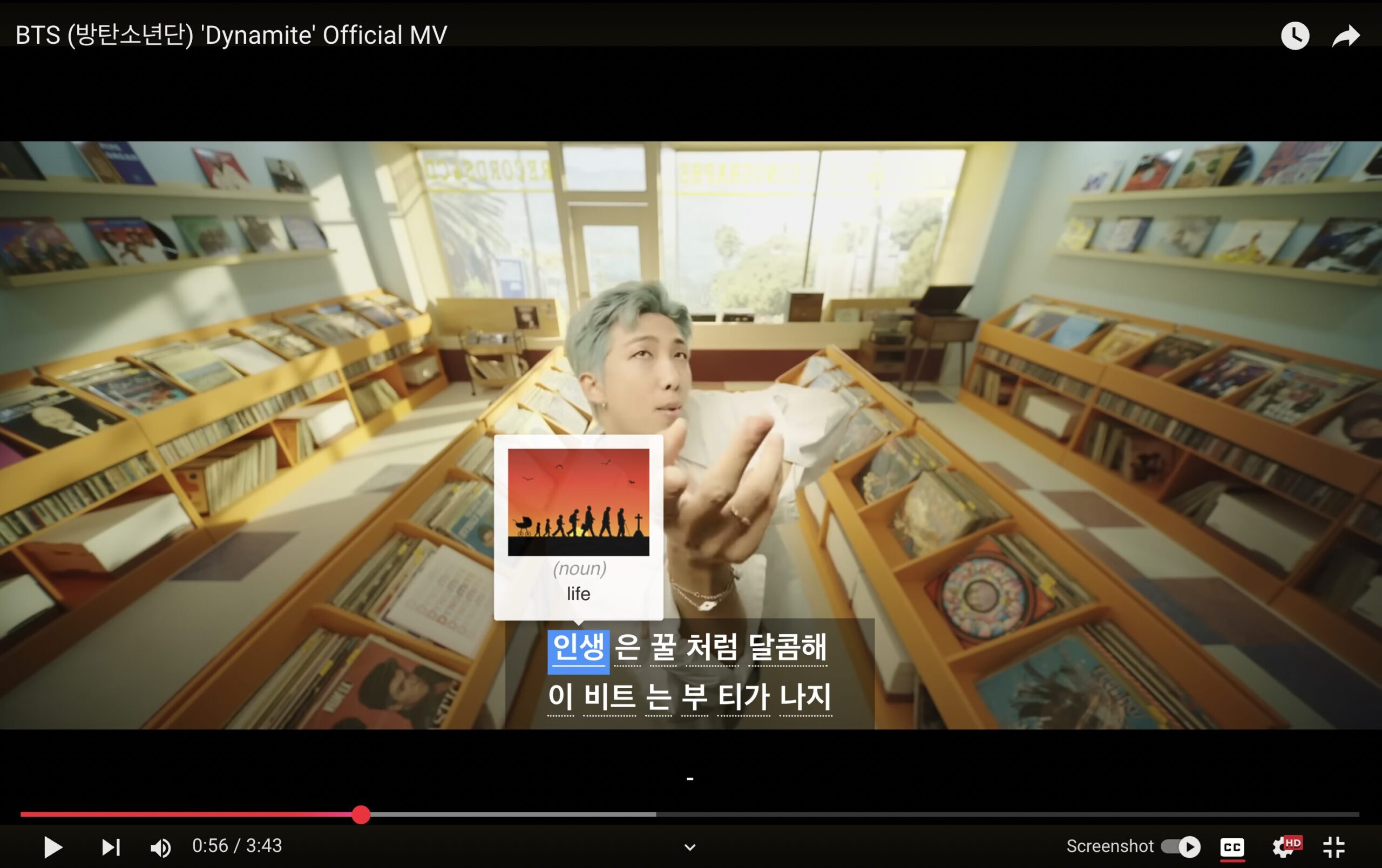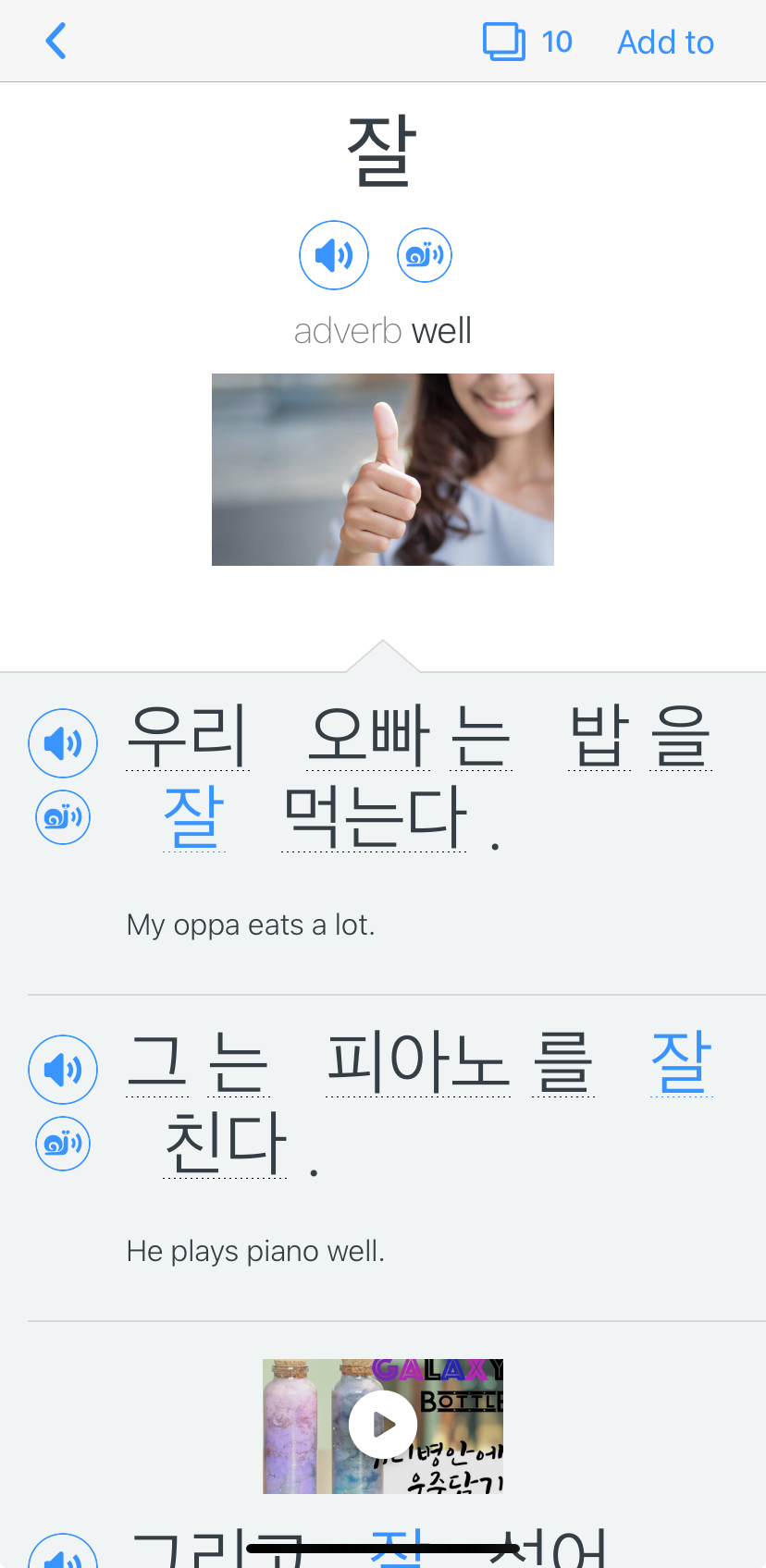Contents
- 1. Pave Your Korean Learning Path
- 2. Master the Korean Alphabet
- 3. Train Your Ear and Mouth to Korean Sounds
- 4. Learn Your Korean 1-2-3s
- 5. Stockpile Core Korean Vocabulary
- 6. Use Flashcards
- 7. Learn Korean Greetings and Introductions
- 8. Move On to Basic Conversation Expressions
- 9. Study Up on Korean Grammar
- 10. Craft Your Own Korean Sentences
- 11. Learn How Etiquette Affects Korean Speech
- 12. Pick Up Casual Korean Lingo
- 13. Watch Plenty of Korean Dramas
- 14. Listen to Your Favorite K-Pop Artist
- 15. Join Language Exchange Communities
- 16. Put Your Korean Skills to Work In Other Ways
- And One More Thing…
How to Learn Korean [16 Steps to Speak Korean from Scratch]

So you’ve decided you’d like to learn Korean.
But with the abundance of materials available, how do you know the best place to start?
This post is the ultimate guide on how to learn Korean, all the way from the beginning.
Download: This blog post is available as a convenient and portable PDF that you can take anywhere. Click here to get a copy. (Download)
1. Pave Your Korean Learning Path
First things first: why are you learning Korean?
Figure out your goals
Perhaps you’re looking to conduct business with Korean partners. Maybe you’re knee-deep in the K-pop fandom. Or maybe you just think the language is cool (it is!) and want to add it to your lingual repertoire.
Whatever your reasons, understanding the “why” of your studies will help to provide motivation throughout your studies. Consider your motives as the rock that will ground you even when learning can get a little tough.
Settle on a schedule
Having a consistent agenda is half the battle when it comes to self-studying. Without a concrete plan of action, things can fall apart very quickly.
These tips are key to follow, no matter which study system you choose.
- Study up! Follow your chosen curriculum and be sure to fully assimilate novel content before you move on to the next lesson. The goal is to make new knowledge active, not just passive.
- Be regular. Try to keep the time consistent for both when and how long you study, preferably daily. It’s critical that the time is measured enough to be productive, but is also tolerable.
- Stay realistic. Make sure it’s reasonable enough to do two things: be long enough so that you can learn enough new things, and be comfortable enough that it won’t add stress to your other everyday tasks.
- Take notes and review them. There’ll be a bunch of new elements to memorize quickly, so make sure that after you take notes, you spend some time memorizing them!
Gather your resources
At this point, focus on the kinds of resources you typically prefer for studying. You don’t have to go nuts and gather everything you can, but do collect enough comprehensive ones to keep you occupied for the coming weeks.
You may like the traditional approach and settle for the dependable Korean textbooks and workbooks. If you’re into digital learning, you may opt for nifty Korean learning websites or convenient Korean language-learning apps.
2. Master the Korean Alphabet
한글 or Hangul is the Korean alphabet.
It’s been used since the Joseon Dynasty in the 15th century A.D. and was made at the behest of a Korean king, King Sejong the Great, who wished to create a writing system that was readily accessible to commoners.
Before Hangul, only a few privileged folks could write in Korean society, and that was with Chinese characters! Composed of 14 consonants and 10 vowels, Hangul is said to be the most scientific alphabet in the world.
Memorize the characters and sounds
Learning Hangul is straightforward—all you need is to memorize the characters and the sounds that are associated with them!
- Spend time writing the series of symbols and simultaneously pronouncing their sounds to create an audiovisual connection. Make sure that you also practice vowel and consonant combinations.
- Then, proceed to writing simple words. Make it easy and fun, and keep practicing no matter what your level of Korean is. Don’t stop writing, even after you’ve mastered the strokes and sounds.
There are free mini-courses to help you ease into it gradually. Aside from teaching you the alphabet, the lessons will help you understand how to build a Korean syllable, how to handwrite in Korean and how to pronounce Korean sounds and basic Korean words.
Practical immersion tips
Next, practice some reading.
It’s okay if you don’t understand everything (or even anything). Remember, this is Hangul practice more than comprehension practice. Keep practicing until you’re able to read the text without pausing!
- If you’re an absolute beginner with Hangul, use real Korean movie posters and read the words out loud. There aren’t so many words that it becomes overwhelming!
- If you’re at the intermediate level, spend five to 10 minutes a day reading a full Korean text out loud. Start with perhaps children’s books, and move on to more difficult content later.
- If you can read Hangul with ease, use karaoke songs on YouTube with lyrics in Korean at the bottom and sing along. The pace is just fast enough so you can practice reading quickly and accurately!
3. Train Your Ear and Mouth to Korean Sounds
Another important thing to focus on at this stage is getting the sounds of Korean right.
For instance, take ㄱ, ㅋ, ㄲ. The first letter, ㄱ or 기역 (giyeok) has a sound somewhere between g and k. Its pronunciation varies depending on where this letter is located inside a word.
The middle one, ㅋ or 키읔 (kieuk) has a sound similar to k, but with stronger aspiration, like very strong k. The sound of the last letter ㄲ or 쌍기역 (ssanggiyeok) doesn’t exist in English, so you must get familiar with it.
Practice double consonant pronunciation
There are five double consonant sets in total: ㄲ, ㄸ, ㅃ, ㅆ, and ㅉ. To pronounce them correctly, you’ll have to take the sound of the single consonant, but put more emphasis by tensing up your tongue.
Let’s take ㄸ as an example. Attempt to pronounce ㄷ but with more strength, almost as if you’re flicking it between your teeth. The resulting sound is often transliterated as dd or tt, but in reality, it’s somewhat in between the two.
Don’t worry too much about accent
At this point, don’t worry about sounding like a native speaker. Knowledge and experience of Korean accent matters will come over time, so don’t stress about sounding completely correct.
Korean isn’t a tonal language, in which your tone of speech can change the meaning of what’s said. It’s syllable-timed and thus words can sound somewhat flat and quick.
It’s more important that you’re able to recognize and articulate (to reasonable accuracy) the phonetics of Korean. That is, when you’re listening to a Korean speaker, you should be able to parse out the sounds.
Practical immersion tips
- Frequently listening to Korean audio will be one of the best ways to train your ears and mouth to the language. Korean music, podcasts, radio and even audiobooks are fantastic and readily available choices. Don’t worry about understanding everything you hear—that comes later!
- Try to transliterate English words into Korean letters. I did this often when my friends would request I write their English names into Korean, such as Annie into 애니 or Brian into 브라이언. This is great for practicing Hangul and getting a good grip on the sounds at the same time.
4. Learn Your Korean 1-2-3s
Now we’re moving on to actual Korean words, and we’ll start first with numbers. The Korean language has two number systems: the Sino-Korean system (based on Chinese numerals) and the Native Korean system.
Start with the Native Korean number system
I recommend you start with these numbers first, since they’re pretty easy and used for general counting.
You’d use them when you want to note how many there are of something. For example, to say things such as “three apples,” “65 students,” “32 absences” and so forth.
Other instances in which you’d use native Korean numbers would be with describing age and the hour (but not the minutes) of the time.
Important to note is that the native Korean numbers don’t include zero and don’t go above 99. At the 100 mark and beyond, you move on to the Sino-Korean system.
Here are numbers one through 10:
- 하나 (ha-na) — one
- 둘 (dul) — two
- 셋 (set) — three
- 넷 (net) — four
- 다섯 (da-sut) — five
- 여섯 (yuh-sut) — six
- 일곱 (il-gop) — seven
- 여덟 (yuh-dulp) — eight
- 아홉 (ah-hop) — nine
- 열 (yuhl) — ten
Native Korean numbers follow a pattern that’s easy to learn once you know numbers one through 10. After that, you’ll have some more numbers to learn.
Spend a bit more time learning the Sino-Korean number system
The use of Chinese numerals stems from the extended history of Chinese influence on the peninsula.
As mentioned earlier, the Sino-Korean numbers are automatically used for zero and numbers 100 and up. However, they’re also used for dates, phone numbers, money, and the minutes of time.
Here are numbers zero through 10 in Sino-Korean:
- 영 (yung) / 공 (gohng) — zero
- 일 (il) — one
- 이 (ee) — two
- 삼 (sahm) — three
- 사 (sa) — four
- 오 (o) — five
- 육 (yook) — six
- 칠 (chil) — seven
- 팔 (pahl) — eight
- 구 (gu) — nine
- 십 (ship) — ten
In general, Sino-Korean numbers are used more frequently than native Korean numbers. So if you were to really focus on either of the two number systems, I’d suggest you spend a bit more time with the Sino-Korean one.
Practical immersion tips
- Implement Korean numbers in your daily activities that involve counting. This can include grocery lists, money counting, workout reps and so on. Remember to utilize the right number system for the right context!
- For Sino-Korean number practice, you can also try to make your own Korean math problems. Start with easy and elementary stuff first.
더하기 (duh-ha-gi) — plus
빼기 (bbae-gi) — minus
곱하기 (go-pah-gi) — times
나누기 (na-nu-gi) — divided by
는 (neun) / 은 (eun) — equals, use 은 if last syllable is a consonant
An actual Korean math phrase is structured similarly to one in English. So if you want to say “two plus two” you would say “이 더하기 이는 사.”
5. Stockpile Core Korean Vocabulary
Now that you’re relatively comfortable with numbers, it’s time to move on to the meat of things: actual Korean words! Vocabulary, called 어휘 (uh-hwee) in Korean, will be your next step.
There are also tons of loanwords in the Korean language which come from English. This can give you a boost in your vocabulary collection and can show you that you already know many of these words!
Hone in on the most common Korean words
There is, in fact, a “right order” to the words you learn in a language. Focus on the most essential vocabulary, such as everyday objects, basic verbs and adjectives.
Think of the matters and themes that you’d likely speak about daily—these are what you should learn the Korean words for. That way you can begin using them right away!
To help you with this, you can utilize Korean word lists that you can easily find online. Look for the word lists that are named something like “top 100” or “most common.”
Remember to speak words out loud while learning them
Don’t forget that you shouldn’t just let your eyes and hands do all the work when reading and writing Korean words. You should be actively working out your jowls and practicing your pronunciation non-stop.
It’s common to neglect this, especially for self-learners. But remember, you’re aiming to actually speak Korean. The occasional mutter under your breath and mental verbalizing won’t be enough for pronunciation practice.
Practical immersion tips
- A great way to practice is by labeling items around your house in Korean. Stock up on sticky notes and plaster them around. Keeping them on and being able to see them everyday will help to reinforce your memory of the words.
- Keep a Korean dictionary handy, preferably a digital one, so that you can look up any word on the go. Whenever you feel the urge to learn a new word, just whip out your dictionary and get a translation on the spot!
- Scroll through YouTube, listen to native content and see if you come across any English-Korean loanwords. You can make a list of the loanwords you find and you might be surprised just how many there are!
6. Use Flashcards
If you need some help with remembering all that vocabulary, this next step can help with that. Flashcards stimulate your memory through visual association.
How to use flashcards for learning
- Make them yourself. The best flashcards are often the ones you make yourself! Rather than buy ready-made flashcards, the best way to make them work for you is to personalize them.
- Use digital flashcards or pre-made sets with flashcard apps. Flip through decks during study sessions or whenever you have a few minutes to spare.
- For fancy audio flashcards, you may want to check out the Learn with Oliver website. It isn’t free, but you get a free trial for 30 days.
Practical immersion tips
If you’ve decided to make your own flashcards, we recommend keeping it simple.
- Write a Korean word on the front and its translation on the back. Optionally, you may want to add the word’s Korean pronunciation on the back as well.
- Test yourself. Start by reading the Korean word and come up with its translation. When you’ve completed the set, flip the cards and repeat the process, this time by reading the English word and translating it into Korean.
- Alternatively, you may pair with a friend. If they don’t read Hangul, ask them to show you the Korean word and, as quickly as possible, give them the English equivalent!
7. Learn Korean Greetings and Introductions
Next, it’s a good idea to focus on actual Korean phrases and sentences. Hopefully, you’ll be utilizing the core vocabulary you’ve learned earlier, but let’s first start with the essential greetings.
This is the time to learn your hello’s, how are you’s, goodbye’s and “My name is.” Even if you don’t know much Korean, native speakers can still appreciate a quick basic greeting when you first meet them.
Here’s a basic list of just a few Korean greetings to get you started:
- 안녕하세요 (ahn-nyung-ha-se-yo) — Hello (can be used for most situations)
- 제 이름은 ___ (jeh ee-reu-meun ___ ) — My name is ___
- 여보세요 (yuh-bo-se-yo) — Hello (on the phone)
- 좋은 아침이에요 (jo-eun ah-chi-mee-eh-yo) — Good morning (lit. It’s a good morning)
- 안녕히 주무세요 (ahn-nyung-hee ju-mu-se-yo) — Good night (lit. Sleep well)
- 어떻게 지내세요? (uh-tteoh-keh jee-neh-se-yo) — How are you?
- 안녕히 계세요 (ahn-nyung-hee ge-se-yo) — Goodbye (when you’re leaving and your conversation partner is staying)
- 안녕히 가세요 (ahn-nyung-hee ga-se-yo) — Goodbye (when your conversation partner is leaving)
Greetings are gestures of courtesy
Remember that, like in most cultures, greetings are a gesture of courtesy for Koreans. Forgetting to say them, especially to those older than you, can be immediately noticed.
Greetings are also commonplace (and expected) when you’re a newcomer to an establishment, whether it’s a new workplace or an apartment building with next-door neighbors.
Practical immersion tips
- I highly suggest that you practice greetings with any Korean folks around you. They don’t even have to be your friends. They can be store owners or your neighbors.
- Simply give them a quick greeting while you’re passing by. The nice thing about greetings is that they can be left at just that—there’s no need to engage in a long conversation after you just offer a quick “Hello.”
- It’s also a good chance for you to work on building your confidence in actually speaking Korean to others. In my experience, many native speakers (especially older folks) tend to enjoy hearing non-natives trying out their language!
8. Move On to Basic Conversation Expressions
With greetings out of the way, move up a step and start learning some essential Korean conversational phrases. Basically, what would you say after you greet someone?
- __주세요 ( __ ju-se-yo) — Please give me ___
- 얼마예요? (uhl-ma-eh-yo) — How much is it?
- 괜찮아요 (gwaen-cha-nah-yo) — It’s okay
- 만나서 반갑습니다 (mahn-na-suh bahn-gap-seum-ni-da) — Nice to meet you
- 오늘 날씨가 좋네요 (o-neul nahl-ssi-ga jon-ne-yo) — It’s nice weather today
- 해야 할 일이 있어요 (heh-ya hal ih-ree ee-ssuh-yo) — I have to do something
By learning phrases such as these, you’re gradually improving your ability to manage a chat in Korean. This is the ultimate goalpost you’re seeking, so do spend as much effort as needed to learn a decent number of phrases!
Learn what each word means in a phrase
Whenever you learn a new phrase, parse each word out so that you understand each element. Separate the phrase into nouns, adjectives, verbs and so forth.
As basic as it sounds, it’s actually something that language learners can forget to do.
The Korean language is quite straightforward, so this task shouldn’t be too hard. With this, you’re reinforcing your knowledge and storing away individual words that you can point out in different phrases and sentences.
Have a limit to how many phrases you learn per session
Trying to stomach so much information at once can make you more susceptible to forgetting material. Even scientific studies suggest that there can be a “right time” to learn and that spacing your learning material out will lead to better recall.
So start easy with a number you know you can handle, and make certain that you’re reasonably confident with them before you move forward.
Practical immersion tips
- In your personal life, try to switch out any everyday phrases you use with Korean alternatives. Ideally, you’d have a Korean-speaking pal with whom you can practice, but if you don’t, then act out a conversation with yourself.
- Take it a step further and record yourself while you’re speaking. The more you vocalize and listen to yourself, the more confident you’ll be when you use these phrases in real-life scenarios.
9. Study Up on Korean Grammar
Unfortunately, you can’t really avoid grammar when learning any language. And at this point, you’ve already spent a while looking at plenty of Korean sentences, so you’ve probably noticed a few patterns at work.
Luckily, the rules of Korean sentence structure aren’t overly complicated. I’d say Korean grammar is a lot more consistent and straightforward than English grammar.
Korean sentences typically follow a Subject-Object-Verb format
In English, our sentences typically utilize a subject-verb-object order. For example, “I eat cheese.”
However, Korean sentences switch up the format a bit, to say something more like “I cheese eat.” The Korean sentence for that, by the way, would be 나는 치즈를 먹는다 (na-neun chi-jeu-reul mung-neun-da).
You’ve probably already realized this in your own encounters with Korean sentences, but reviewing the sentence structure at this point will be helpful.
Korean grammar doesn’t utilize cases
In English, we have three cases: subjective, objective and possessive. They describe a noun or pronoun as it works with the rest of the words in a sentence. Changing cases usually means a change in the form of the noun itself.
Korean grammar doesn’t concern itself with this business. That already cuts down on a good deal of grammatical stress. Instead, they use something referred to as particles.
Particles are key for Korean grammar
Don’t be fooled by their name because particles play a huge role in Korean sentences. Knowing the most basic of Korean particles will help you understand most phrases.
Functionally, particles are suffixes or attachments that follow nouns. They explain what exactly the noun is doing within the framework of the sentence. With them, you don’t even have to worry about unique noun forms like you do in English.
Here are a few examples of common Korean particles:
- 은 (eun) / 는 (neun) — describe nouns that are the primary topic of the sentence
- 이 (ee) / 가 (ga) — describe nouns that are the subjects of the sentence
- 을 (eul) / 를 (reul) — describe nouns that are the objects of the sentence
There are many more particles, including those that work as conjunctions, possessives, plural objects and so forth. Knowing particles will be critical to your understanding of Korean sentences, so always keep an eye on them!
Practical immersion tips
- You can read easy Korean texts, such as short stories and the like. They should be simple enough so that you’re able to able to have a decent sense of understanding. Pay attention to how the sentences are formulated and the placement of particles.
10. Craft Your Own Korean Sentences
By now, you’ve been exposed to a good number of Korean phrases. Now is a good time to put everything you’ve learned thus far to use through actively producing more of your own sentences!
At the same time, you should be expanding your exposure to Korean sentences in general. Read more Korean texts so that you’re still working to bulk up your word bank and language knowledge.
Focus on familiar vocabulary when making sentences
Again, start easy and work with the words you already know. And when I say easy, I mean very easy, like these:
- 나는 케이크를 좋아한다 (na-neun keh-ee-keu-reul joh-ah-hahn-da) — I like cake
- 나는 학교에 갔다 (na-neun hak-gyo-eh gah-dda) — I went to school
- 오늘은 좋은 날이다 (o-neu-reun joh-eun nal-ee-da) — Today is a good day (or that the weather is fine)
Make your sentences short and concise. Don’t worry about any fancy details. You should be focusing almost entirely on utility and function based on the Korean you already know.
Practical immersion tips
Keeping a Korean journal is a neat way to practice writing Korean sentences.
- Document your daily activities or thoughts, or just write random things that zip through your brain.
- When writing, aim for a minimum of three to five sentences per day. They don’t have to be perfect, but make sure you come up with them yourself.
- Increase to a few paragraphs if you feel more confident. For memorization purposes, I also suggest that you write down the same sentence multiple times.
11. Learn How Etiquette Affects Korean Speech
So now you’re gaining momentum in formulating your own Korean sentences. It’s a good time to learn another important aspect of the language: speech levels.
Politeness and respect are critical to Korean culture. Failing to express the proper courtesy to the right individuals, whether forgetting to bow or neglecting to prepare a gift, can be a major no-no.
Not using the right speech level can earn you a few raised eyebrows or a stink-eye, or it can lead to some verbal reciprocation from particularly ticked-off individuals.
Recognize the tiers of Korean formality
In general, when learning Korean, you learn and use the “standard” speech level that’s appropriate for most everyday situations.
This level is known as 해요체 (hae-yo-chae) and is considered “casual formal.” It also works when you want to speak to acquaintances and those around your age.
You may even learn a bit of 해라체 (hae-ra-chae), which is considered formal, but not necessarily respectful. In essence, it’s a “neutral” level that you’d see in Korean texts.
Here’s a quick overview of some common Korean speech levels:
- 해체 (hae-chae) — informal, for friends
- 해라체 (hae-ra-chae) — neutral, commonly utilized in Korean written texts
- 해요체 (hae-yo-chae) — casual formal, for general use, acquaintances and those around your age
- 하십시오체 (ha-ship-shi-o-chae) — formal polite, for elders, news broadcasts, customer service
There are also, of course, “impolite” speech levels, but you probably don’t want to be learning that.
Speech levels utilize different verb endings
Your politeness will come through with your usage of verb endings. Depending on what speech level you’re using, the verbs in your phrases will also utilize specific suffixes.
More specifically, you’ll have to take the stem of the verb and attach it with an ending. I’ll show you a comparison between two speech levels.
For 해요체, you’ll utilize “verb stem + -요” for most sentences. If you’re making a request or demand, then you’d utilize “verb stem + -세요.” For example:
괜찮으세요? (gwaen-chah-neu-se-yo) — Are you okay?
말해 주세요 (mahl-heh ju-se-yo) — Tell me
For 하십시오체, which is formal polite, you have to do a little more. You include ㅂ at the end of the verb stem plus 니다. For requests or demands, you use 니까.
실례합니다 (shil-reh-ham-ni-da) — Excuse me
바쁘십니까? (ba-bbeu-shim-ni-kka) — Are you busy?
Other speech levels will utilize their own specific verb endings. It sounds like a lot to memorize, but you’re likely to catch on to this concept quickly if you’re avidly exposing yourself to the language.
Know the Korean honorifics
In essence, speech levels involve the use of Korean honorifics and changes in verb endings. Honorifics are the titles that address your understanding of others’ social positions.
Here are a few examples of Korean honorifics:
- 씨 (shi) — Mr., Miss, Mrs., a relatively generic “safe” honorific
- 님 (nim) — similar to 씨 in meaning, but a bit more respectful
- 선배 (sun-bae) — for your seniors, whether in work experience or age
- 오빠 (op-pa) — older brother, used by females
- 형 (hyung) — older brother, used by males
- 누나 (nu-na) — older sister, used by males
- 언니 (un-ni) — older sister, used by females
Honorifics are obvious verbal markers of respect, and so forgetting to say them can be a big faux pas to certain individuals. Their absences are very easily noticed since they must directly follow the name of the person you’re referring to.
Practical immersion tips
Role-playing can be a fun way to practice Korean formality and speech levels.
- It’s best to do a role-play dialogue with a partner, but even if it’s just you, you can take on the roles of different individuals and monologue.
- Have fun with it! Pretend to be a stern Korean businessman talking with a client, a high school student chatting with his or her junior, a restaurant waiter serving a customer, and so on.
12. Pick Up Casual Korean Lingo
While it’s encouraged that you try to learn standard Korean as much as possible, it would be impractical to not learn the common slang and expressions used by modern-day Koreans.
This is especially the case if the bulk of your Korean exposure comes from media sources. It’s pretty much inevitable that you’d hear a few idioms and casual jargon.
Slang is prolific in online conversations
According to statistics, around 90% of the population use the Internet. One of their largest social media and messaging tools, KakaoTalk, has been measured to host a whopping 47 million active South Korean users.
If you’re using online native Korean resources for your studies, it’s likely that you’ll encounter slang in some form. To avoid confusion while you’re navigating websites, it’s not a bad idea to pick up a few bits of slang.
You may also want to learn a few Korean text slang while you’re at it, so that you can get some reading and writing practice.
Slang in everyday conversation
There are also a lot of words that people don’t just use online, but in everyday life. Here are a few examples of this type of language category:
- 대박 (dae-bak) — That’s nuts / Whoa
- 당근 (dang-geun) — Of course (literally means “carrot”)
- 헐 (huhl) — What (expression of disbelief)
- 너 잘났다 (nuh jal-na-tta) — Literally means “You were born well” and can be used sarcastically
- 잼 /노잼 (jem / no-jem) — Fun / No fun, 잼 is the condensed form of 재미있다 (It’s fun)
Feel free to try out the words you learn, preferably with your buddies or with those who are around your age.
Practical immersion tips
- I highly recommend you begin engaging with real Korean content, if you want to become familiar with casual Korean speak. For example, you can watch Korean vlogs and read Korean blogs.
- Make note of the slang being used. Vloggers and bloggers want to connect to their audience, so they’d often adopt more realistic and genuine speech. That includes everyday slang and idioms.
13. Watch Plenty of Korean Dramas
Whether it’s movies, TV shows or music videos, Korean media is an excellent resource for you to test your Korean knowledge in a fun, relaxed way. You’ll pick up more natural pronunciation and increase your vocabulary knowledge.
Korean dramas are an especially fun, entertaining way to learn the Korean language and start really understanding Korean culture! Of course—take what you see with a grain of salt. After all, dramas are pretty… dramatic.
You’ll also get visual cues like expressions, gestures and scenery to help you glean the meaning. We promise, the more you watch, the more you’ll understand.
Where to find Korean dramas
- Netflix is a fantastic resource to teach yourself Korean. There are no accompanying lessons and the Korean subtitles are often closed captioned (and therefore, not always 100% accurate), but it’s a perfect option if you’re already a Netflix subscriber.
- TV streaming sites like Viki also offer a large selection of Korean dramas with complete seasons, perfect for binge-watching. The site is free with ads, but you have the option to subscribe to the service and skip them altogether if you prefer.
But while it’s effective, it’s not very efficient to be constantly trawling the web for appropriate videos and switching between different online dictionaries to make sense of it all. The language program FluentU aims to make this seamless.
FluentU takes authentic videos—like music videos, movie trailers, news and inspiring talks—and turns them into personalized language learning lessons.
You can try FluentU for free for 2 weeks. Check out the website or download the iOS app or Android app.
P.S. Click here to take advantage of our current sale! (Expires at the end of this month.)
Practical immersion tips
- Start by picking a drama you like. If you’re new to Korean dramas, you can read about them on MyDramaList. Browse for titles that look interesting and head over to your favorite streaming site to see if it’s available there.
- Use subtitles wisely. When you first start watching, replay a scene a few times and see how much you can understand without English subtitles. Once you’ve understood as much as you possibly can, pop on the subtitles in Korean and watch again. After that, watch one last time in English.
- Take notes! Especially in the beginning, you’ll pick up lots of useful expressions, vocabulary, structures and even cultural facts from your study sessions. Make sure to write them down and review your notes regularly.
14. Listen to Your Favorite K-Pop Artist
Chances are, one reason you’re drawn to the Korean language is Korean music. I myself have lost count of how many of my friends decided to pick up Korean due to their avid love of K-pop music.
This approach gives you plenty of informal vocabulary and keeps you up to date with Korean pop culture. Best of all, you can gush with your Korean exchange partner about your favorite tunes!
How to learn Korean with music
Language learning with music is a popular method for those wanting to enjoy their study while focusing on boosting their vocabulary.
- If you’re a beginner, it’s advisable to start by listening and exploring. Don’t worry too much about comprehension but instead, focus on finding the right music or a group that you enjoy.
- As you progress, you can start to integrate lyrics in Hangul and with an English translation into your learning.
- For an intermediate-advanced learner, activities such as fill-the-gap or predicting the lyrics are a great way to recall vocabulary and practice grammar structures.
Favorite Resources
- The website Genius is a convenient resource to find lyrics both in the original Hangul and English. You can discover extra content such as annotations from fans and relevant news.
- Of course, a quick YouTube search will also yield plenty of K-Pop tunes with English translations for you to sift through, although this approach may require additional steps to create a worthwhile lesson.
15. Join Language Exchange Communities
This is a good time to try and impress any Korean friends you have. With your pals, you’ll undoubtedly be more comfortable with your successes and failures in Korean communication.
However, don’t underestimate the power of speaking with strangers. You can find language exchange partners or forums that will host Korean speakers who would be happy to chat with you.
Mistakes are inevitable in your speaking attempts, so don’t shy away from them. Actively seek feedback from your conversation partners and steadily build both your confidence and skills.
Talk with other Korean speakers
If you’re after a bit of help to get over some potential nerves of a language exchange, this video from our YouTube channel covers how you can start and carry on a conversation when you’re shy:
How language exchange usually works
Language exchange communities are based on mutual learning exchanges. Share your native language with a native Korean speaker, and then let them teach you Korean.
Usually, you’ll arrange to have a 50/50 split, where each language is spoken for 50% of your conversation. This is ideal for practicing listening and speaking, but also works if you want more structure.
Communicate in advance to find a partner who you get along with and who wants to practice regularly, and spend two to three times a week on the platform of your choice for maximum efficiency.
Practical Immersion Tips
- With Speaky, you can chat or make phone calls with one of the numerous speakers connected online at any time, for free. Also, the platform lets you find the Korean language partner of your choice by selecting their preferences, habits and more.
- Interpals is another great way to meet Korean natives and make Korean friends. If you aren’t quite ready to practice speaking just yet, they also have a penpals program worth checking out.
16. Put Your Korean Skills to Work In Other Ways
You finally made it to this point! I’m certain that at this point, you’re probably quite keen on deepening your knowledge of the Korean language.
Develop your skills further with a Korean language course or teacher
Participating in a Korean language course or getting taught by a Korean teacher can be a fantastic way to improve your Korean language capabilities.
With a dedicated instructor, you can receive more personalized attention and in-depth practice with the core concepts. Of course, this option will often require a fee, usually dependent on how long you wish to study for.
But if you’re like me and enjoy having a curriculum, you can reap great benefit and success with having a clear course structure.
Go to Korea! Or Korean-language establishments
Naturally, traveling to Korea can be the ultimate opportunity to practice your skills. Within the country, you’ll be completely immersed in the language and essentially be forced to interact while using your Korean.
However, travel isn’t always feasible. So if you’re not able to hop on the next plane to Seoul, then you can still check out your own neighborhood for Korean-language establishments.
These include Korean restaurants, supermarkets, shopping districts and even community centers. You can read labels in Korean or chat with Korean shop owners while exploring these spaces.
Speaking of Korean community centers, it’s also possible that they may host special Korean events and festivals in your locale. You should certainly check them out and mingle with the crowd, soaking in the sights and sounds.
Now that you know what to do to learn Korean efficiently, all you need is to get started.
So, 3… 2… 1… 시작! (shijak! start!)
And One More Thing…
If you’re like me and prefer learning Korean on your own time, from the comfort of your smart device, I’ve got something you’ll love.
With FluentU’s Chrome Extension, you can turn any YouTube or Netflix video with subtitles into an interactive language lesson. That means you can learn Korean from real-world content, just as native speakers actually use it.
You can even import your favorite YouTube videos into your FluentU account. If you’re not sure where to start, check out our curated library of videos that are handpicked for beginners and intermediate learners, as you can see here:
FluentU brings native Korean videos within reach. With interactive captions, you can hover over any word to see its meaning, an image, and grammatical information and hear its pronunciation.
Click on a word to see more examples where it's used in different contexts. Plus, you can add new words to your flaschards! For example, if I tap on 잘, this is what pops up:
Want to make sure you remember what you've learned? We’ve got you covered. Each video comes with exercises to review and reinforce key vocab. You’ll get extra practice with tricky words and be reminded when it’s time to review so nothing slips through the cracks.
The best part? FluentU tracks everything you’re learning and uses that to create a personalized experience just for you. Start using the FluentU website on your computer or tablet or, better yet, download our app from the App Store or Google Play.
Click here to take advantage of our current sale! (Expires at the end of this month.)













